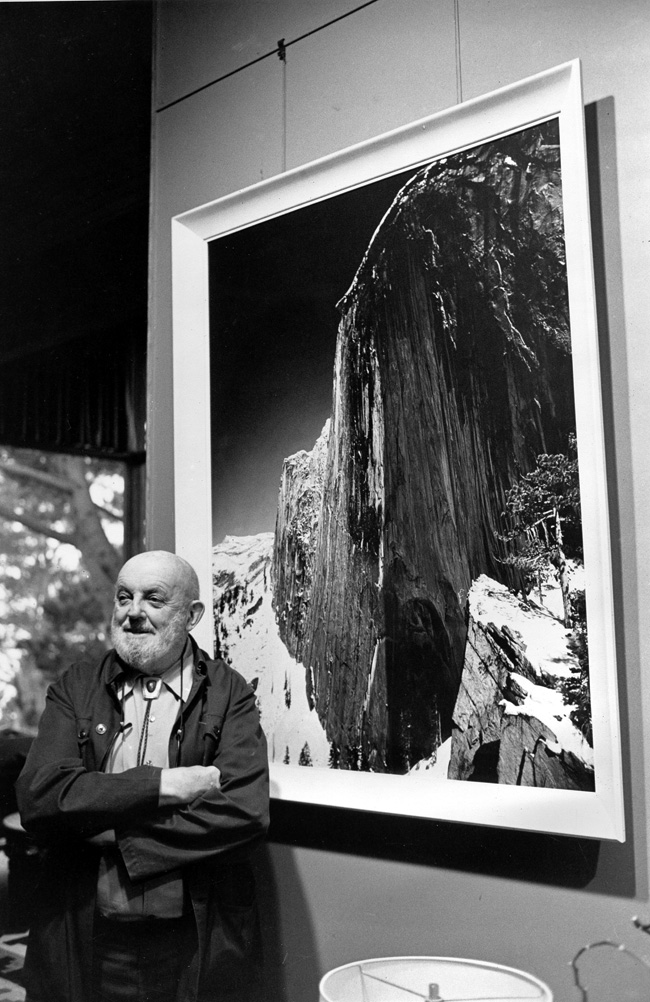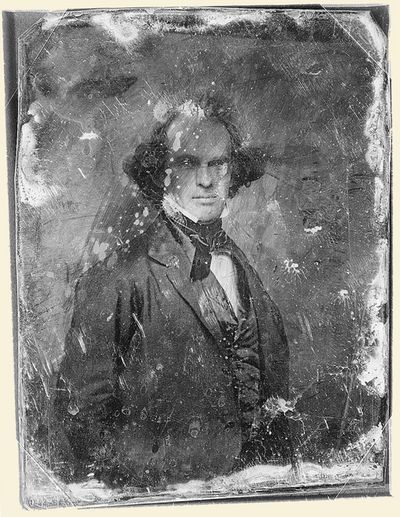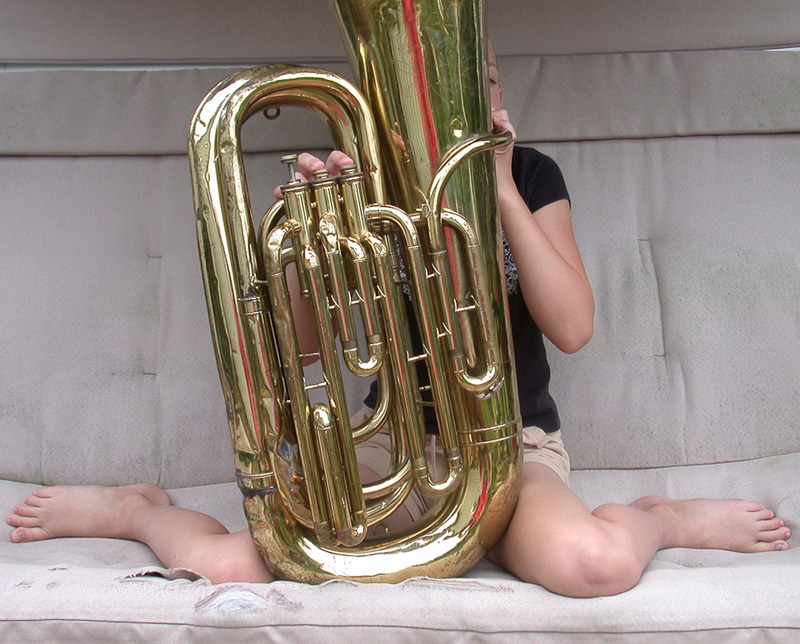 Ansel Adams with his "first true visualization," Monolith, the Face of Half Dome, 1927, an early picture that remained important to him for the rest of his life
Ansel Adams with his "first true visualization," Monolith, the Face of Half Dome, 1927, an early picture that remained important to him for the rest of his life
-
As I replaced the slide, I began to think about how the print was to appear, and if it would transmit any of the feeling of the monumental shape before me in terms of its expressive-emotional quality. I began to see in my mind’s eye the finished print I desired: the brooding cliff with a dark sky and the sharp rendition of distant, snowy Tenaya Peak. I realized that only a deep red filter would give me anything approaching the effect I felt emotionally. I had only one plate left. I attached my other filter, a Wratten #29(F), increased the exposure by the sixteen-times factor required, and released the shutter. I felt I had accomplished something, but did not realize its significance until I developed the plate that evening.
I had achieved my first true visualization!
I had been able to realize a desired image: not the way the subject appeared in reality but how it felt to me and how it must appear in the finished print.
—Ansel Adams, Autobiography, p. 76
-
(Thanks to Rich; illustration photographer unknown; AP photo)
ADDENDUM: Here's the text of a post our friend Jim Hughes made back in 2000 to the Photohst (now PhotoHistory) list, in response to some misstatements of fact that had just appeared on that list. Lightly edited, and reposted here with Jim's permission with a postscript from him. —Mike
"Some factualization on the visualization thread:
"Whatever else he might have been, Ansel Adams was one of the most generous and giving people I've had the privilege of knowing.
The March/April 1982 edition of Camera Arts did not contain a letter from Ansel Adams, but did contain a letter from Mark Power*, who wrote in response to a long mail dialogue conducted over a period of time between Ansel and Ralph Steiner, as prepared by Steiner, and published in the September/October 1981 edition of that magazine (which I edited). The piece was titled "The Adams Chronicle" and blurbed on the cover, "Ansel Adams on Visualization." In his side of the dialogue, Adams used the word "visualization" consistently. The exchange between Adams and Steiner is illuminating, to say the least, and worth looking up.
The May/June 1982 Camera Arts does contain a letter-to-the-editor written by Ansel in response to the Power letter. "I dislike as much as anyone any implication that the Zone System is an esoteric end in itself," Adams wrote. "To begin with, I did not 'invent' it. It is a simple codification of sensitometry.... There is far too much 'yak' in photography. Too many people talk and write; too few make photographs of personal and enduring quality."
Here is what Ansel wrote in Polaroid Land Photography (New York Graphic Society, 1978, revised edition of the 1963 Morgan & Morgan edition): "I hope the reader will not be confused by...differences of concept and language.... The late Minor White, one of the great photographers and teachers of our time, adopted somewhat different terminology from my own: 'previsualization,' for example, which I have always considered a redundancy."
Ansel, in his autobiography, in addition to "visualization," did on one occasion use the term "quasi-visualization"!
In the book The New Zone System Manual (Morgan & Morgan, 1976) by Minor White, Richard Zakia and Peter Lorenz, the following statement is made: "Perhaps the most important thing to be learned from practicing the zone system is the concept of previsualization. The word itself means simply 'to see ahead of time.' "
In their preface, the authors state (collectively, I presume): "Practice makes us believe that visualization is of the essence when creativity relates to photography. Photographers can visualize before making the exposure, before printing the negative, and visualize how viewers may respond before showing the print. Once they have previsualized they may revisualize at any time they wish and for whatever reason."
Perhaps that's what Ansel meant by "quasi-"?
And that's all the time I have for digging around in my library today....
J.H., 2000
Postscript: In his introduction to the 1978 New York Graphic Society edition of Polaroid Land Photography, stipulated to be a "thorough revision" of the earlier 1963 Morgan and Morgan edition, Adams wrote: "Throughout this book, visualization of the desired image before the exposure is made constitutes the prime message. Visualization is not an arcane procedure; it is actually a fact of life. To visualize we must first look, and to look is to observe more of the world about us, not only for itself, but also for the aesthetic and meaningful relationships therein. Being aware of these values and relationships, we visualize them as images and—with appropriate technique—can express them through our prints."
J.H., 2011
*Coincidentally, Mark Power, whose blog The Salt Mine is a regular stop for me, is a TOP reader. —MJ
Send this post to a friend
Please help support TOP by patronizing our sponsors B&H Photo and Amazon
Note: Links in this post may be to our affiliates; sales through affiliate links may benefit this site. More...
Original contents copyright 2011 by Michael C. Johnston and/or the bylined author. All Rights Reserved.




